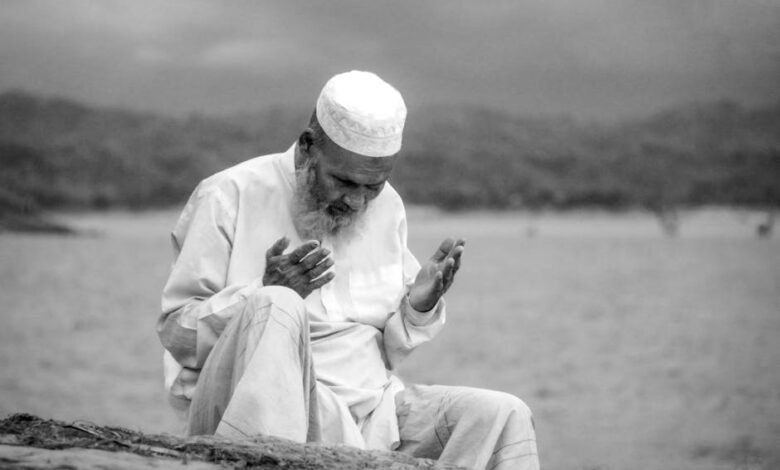The Cosmic Dance of the Soul: Understanding Sufi Whirling

Imagine a world in motion, spinning endlessly, yet at its core, finding a profound stillness. This isn’t just the Earth in its cosmic dance around the sun; it’s also a deeply personal experience, one embodied by the Sufi whirling dervish. When you witness a dervish spin, there’s an immediate, almost primal, sense that they are connected to something unseen, guided by an invisible current that flows through every deliberate turn. It’s an ancient ritual, a mesmerizing prayer in motion, that speaks to the interconnectedness of all creation.
For centuries, this spiritual practice, a core element of Sufism – the mystical dimension of Islam – has captivated observers and offered practitioners a path to divine connection. However, like many spiritual traditions, public practice, particularly its most visually iconic forms, has often been dominated by men. That is, until now. In a truly groundbreaking development, Egypt has seen the emergence of its first all-women Sufi whirling dervish group, a pioneering collective not just performing a dance, but reclaiming a vital space for women within Sufism, spinning a new narrative into an age-old tradition.
The Cosmic Dance of the Soul: Understanding Sufi Whirling
At its heart, Sufi whirling, or Sema, isn’t just a performance; it’s a profoundly spiritual ritual designed to reach a state of divine remembrance and connection. The dervish, often clad in a flowing white skirt, symbolizes a shroud, and their tall felt hat, a tombstone, representing the death of the ego and a rebirth into spiritual truth. As they begin their turns, one hand reaching towards the heavens and the other pointing to the earth, they become a conduit, channeling divine grace from above and distributing it below, all while pivoting on their own axis.
The philosophy underpinning this movement is captivating. A dervish sees their own body as a planet, a self-contained universe mirroring the vast cosmos and its orbiting celestial bodies. Just as the Earth spins in its eternal orbit, seemingly still to those who dwell upon it, the dervish aims to achieve a similar internal equilibrium. The external movement is only visible to the watcher; for the dervish, it’s about finding a deep inner stillness, unity, and harmony with their own center and, by extension, with the entire universe. It’s a physical manifestation of the Sufi belief that to be fully present within one’s body is to be in harmony with the grand orbit of existence itself.
The practice is rigorous, requiring immense discipline, focus, and a deep understanding of Sufi philosophy. It’s a meditation, a prayer, a journey inward and outward simultaneously, striving for a state of ecstatic union with the divine, a feeling of being utterly at one with all of creation.
A Silent Revolution: Women Reclaiming Their Place in Sufism
While Sufism, in its philosophical essence, has always promoted gender equality and the idea that the path to God is open to all, irrespective of gender, the public and ceremonial aspects have historically become male-dominated. Over time, societal norms and cultural interpretations often pushed women to the periphery of public religious expression, limiting their visible participation in rituals like Sema.
This is precisely why Egypt’s first all-women Sufi whirling dervish group represents such a potent and vital shift. Their existence is a powerful statement, an act of spiritual reclamation that challenges preconceived notions and reasserts women’s inherent right to lead and participate fully in spiritual practices, especially those as emblematic as whirling. It’s a courageous step that resonates far beyond the confines of a performance space; it reverberates through cultural and religious dialogues across the region and beyond.
For these women, donning the traditional garments and performing the sacred whirl isn’t just about preserving tradition; it’s about interpreting it anew, infusing it with their unique perspectives and feminine spiritual energy. It’s about reminding the world that the divine spirit knows no gender, and that devotion manifests in countless forms, each equally valid and profound.
Breaking Barriers, Building Bridges
The impact of this group extends far beyond their individual spiritual journeys. They serve as trailblazers, inspiring countless other women who may have felt excluded or marginalized from public spiritual roles. Their visible presence sends a clear message: women are not only welcome but essential to the vibrant tapestry of spiritual life. They are breaking down barriers, not with shouts and protests, but with grace, devotion, and the mesmerizing power of their collective orbit.
This movement also builds bridges – between tradition and modernity, between different interpretations of faith, and between generations. It demonstrates that faith traditions are living, breathing entities capable of evolution and adaptation, always finding new ways to express timeless truths. Their whirling is a testament to resilience, a gentle but firm assertion of identity and purpose in a world that often attempts to dictate those very things.
More Than a Performance: The Deeper Spiritual Resonance
To view these women simply as performers would be to miss the profound depth of their undertaking. Their whirling is a deeply internalized spiritual exercise, a path to self-discovery and divine connection. Each spin, each extended arm, each bowed head is a testament to their personal commitment and devotion. For many, it’s a form of active meditation, a way to shed worldly concerns and tap into a higher consciousness.
There’s an undeniable feminine elegance and strength that they bring to the practice. While the essence of the whirl remains universal, the unique energy and interpretation these women bring enrich the tradition, adding new layers of meaning and expression. Their presence invites a fresh contemplation on the divine feminine principle within Sufism and the broader spiritual landscape.
Witnessing them is not just an aesthetic experience; it’s an invitation to introspection. Their synchronized movements, the quiet intensity in their faces, the almost ethereal atmosphere they create – it all encourages observers to look beyond the physical and glimpse the spiritual quest unfolding before them. It’s a powerful reminder that spiritual journeys are intensely personal, yet deeply universal, and that every individual, regardless of their background, has the right to express their faith authentically and visibly.
Egypt’s first all-women Sufi whirling dervishes are not just making history; they are actively shaping the future of spiritual practice and women’s roles within it. They are demonstrating that traditions can evolve while remaining true to their core, that faith can be both ancient and progressive, and that the profound silence of a spinning dervish can speak volumes. Their graceful revolutions offer a powerful symbol of spiritual freedom, inner harmony, and the unwavering strength of the human spirit to reclaim its rightful place in the cosmic dance.





